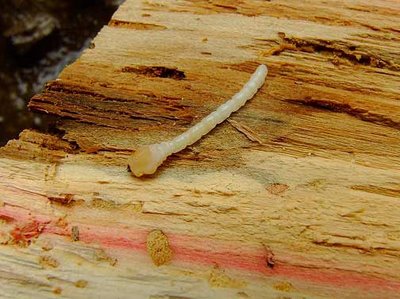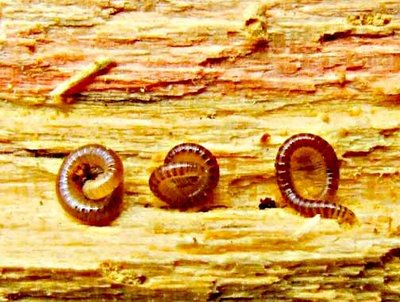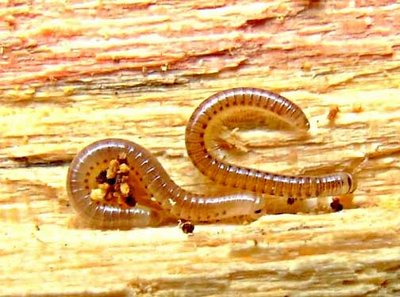
While I was photographing it, I saw three more, much smaller larvae in the wood and brought them to the surface with a splinter. Initially they were curled up in what I assume were defensive positions. After a few minutes they started to uncurl.

After they uncurled, they appeared to be about 1 cm (0.4 inches) long.

I also saw two much smaller larvae that I was unsucessful in photographing as they were too small to make much of an impression in the camera.
So my question is, what do you think they are. After some thought, I am leaning towards identifying the three small larvae as centipedes due to the way they were moving and I think I can see many, many, very small, almost transparent legs on their bodies but the larger larva has me quite puzzled. Any ideas?
4 comments:
I really have no idea what these mystery larvae are. I do like the middle photo, they look like letters spelling out some word I can't identify.
Mystery larvae, mystery words, mystery, mystery, mystery.
Do you know what the species of the wood is? That might help narrow down the mystery grub's identity.
Living in Michigan, I immediately got a visceral reaction to that larvae and thought 'Emerald Ash Borer' - but I've never seen the larval stage, so I have no real idea.
Here is a site with a photo of the ash borer larvae.
I think the top photo must be some species of Melanophila (borer beetle) larva. The species of host tree would probably be the best clue to which species of borer. Anyhow, there's a group of these that are called "flat-headed borers", and I think that may be what the larva is. Here's a link to a photo of a Flat-headed fir borer. I've seen similar flat-headed borers that are in Hemlock, etc.. I'm not sure which species would be common in your area, but there are probably several. Hope this link works.
Post a Comment